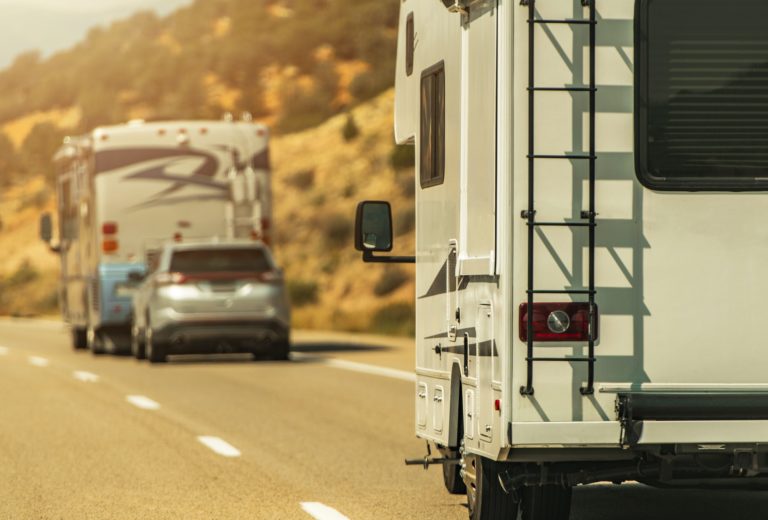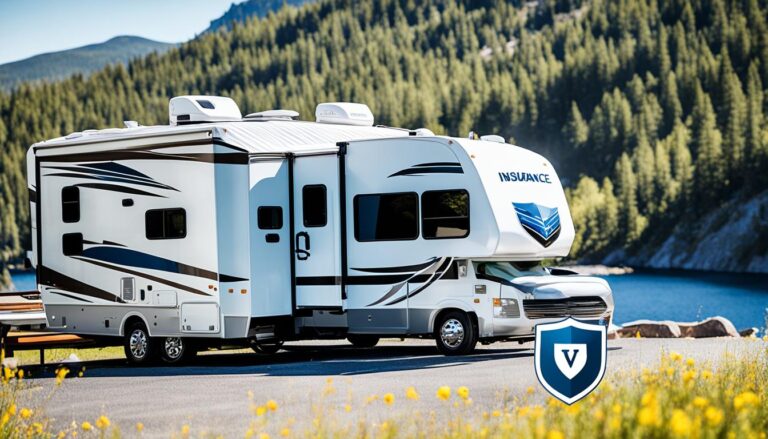Embarking on the RV lifestyle is an exciting adventure, but it can also be a daunting task for those new to the world of recreational vehicles. With so many different types of RVs, floor plans, and features to consider, it’s important to make an informed decision when choosing your home on wheels. This comprehensive guide will help you navigate the RV market and make the best choice for your needs, budget, and travel preferences.
Introduction to RV Types
Before diving into the details of specific RV models, let’s take a look at the basic types of RVs available:
- Class A Motorhomes – These are the largest and most luxurious RVs, offering a spacious living area and many amenities.
- Class B Motorhomes – Also known as camper vans, these are the smallest and most maneuverable motorhomes, perfect for solo travelers or couples.
- Class C Motorhomes – A mid-size option between Class A and Class B, these motorhomes typically have a separate bedroom and more living space.
- Travel Trailers – These towable RVs come in various sizes and can be towed by a range of vehicles, including trucks, SUVs, and minivans.
- Fifth Wheel Trailers – Another towable option, these RVs offer more interior space and are typically towed by a pickup truck with a special hitch.
- Truck Campers – Designed to be mounted on a pickup truck, these compact RVs are ideal for off-roading and backcountry camping.
- Pop-up Trailers – Lightweight and collapsible, these towable RVs are perfect for weekend getaways and easy storage.
Now that you have a basic understanding of the types of RVs, let’s explore the factors you’ll need to consider when choosing your first RV.
Assessing Your Needs and Lifestyle
Before diving into specific RV models, it’s crucial to assess your needs and lifestyle to determine which type of RV is best suited for you. Consider the following factors:
- Budget: Determine how much you can afford to spend on an RV, including the purchase price, maintenance, insurance, and operating costs.
- Travel frequency: Consider how often you plan to use your RV. If you’ll be traveling frequently or living in it full-time, investing in a more comfortable and durable option may be worth it.
- Number of travelers: The number of people who will be using the RV regularly will affect the size and layout you need. Be sure to consider sleeping arrangements and living space.
- Towing capacity: If you’re considering a towable RV, ensure that your current vehicle has the necessary towing capacity or be prepared to purchase a suitable towing vehicle.
- Storage: Think about where you’ll store your RV when it’s not in use. Some types, like pop-up trailers, are easier to store than others.
Comparing RV Types
Once you’ve assessed your needs and lifestyle, you can start comparing different RV types to find the best fit. Here’s a closer look at the pros and cons of each type:
- Class A Motorhomes:
- Pros: Spacious living area, many amenities, separate bedroom, ample storage
- Cons: Expensive, high fuel consumption, difficult to maneuver, may require a special driver’s license
- Class B Motorhomes:
- Pros: Easy to drive, park, and maneuver, lower fuel consumption, lower purchase price
- Cons: Limited living space, fewer amenities, may not be suitable for families or large groups
- Class C Motorhomes:
- Pros: More living space than Class B, separate bedroom, easier to drive than Class A, more affordable than Class A
- Cons: Less spacious than Class A, higher fuel consumption than Class B, may require a special driver’s license
- Travel Trailers:
- Pros: Variety of sizes, can be towed by various vehicles, detachable from tow vehicle for day trips, lower purchase price
- Cons: Requires a suitable tow vehicle, can be difficult to reverse and park, less secure than motorhomes
- Fifth Wheel Trailers:
- Pros: More interior space, separate bedroom, easier to maneuver than travel trailers, detachable from tow vehicle for day trips
- Cons: Requires a pickup truck with a special hitch, can be difficult to reverse and park, higher purchase price
- Truck Campers:
- Pros: Off-road capability, compact and easy to store, lower purchase price, uses the existing truck as a base
- Cons: Limited living space, fewer amenities, may require a pickup truck with a strong payload capacity
- Pop-up Trailers:
- Pros: Lightweight, easy to tow and store, lower purchase price, expandable – Cons: Limited living space, fewer amenities, less insulation and protection from the elements
Evaluating RV Features and Floor Plans
Once you’ve narrowed down your options based on your needs and the type of RV, it’s time to dive into the details of specific models. Here are some key features and floor plan considerations to keep in mind:
- Sleeping arrangements: Ensure that there are enough sleeping spaces for everyone who will be using the RV. Look for options with convertible dinettes or sofas for added flexibility.
- Kitchen and bathroom facilities: Consider the size and layout of the kitchen and bathroom. Is there enough counter space for meal prep? Is the bathroom easily accessible and functional?
- Storage: Make sure there’s enough storage for all your belongings, including clothing, outdoor gear, and food.
- Entertainment: If you plan to spend a lot of time inside your RV, consider options with built-in entertainment systems or space for a TV and gaming system.
- Outdoor living space: Look for RVs with awnings, outdoor kitchens, or additional storage for outdoor furniture to enhance your camping experience.
Test Driving and Inspecting Your Potential RV
Once you’ve narrowed down your options, it’s time to get up close and personal with your potential new home on wheels. Here are some important steps to take before making a purchase:
- Test drive: Make sure you’re comfortable driving the RV or towing it with your current vehicle. Pay attention to visibility, maneuverability, and overall handling.
- Inspect the RV: Carefully inspect the RV for any signs of wear and tear, water damage, or other issues. Look for any signs of leaks, especially around windows, doors, and the roof.
- Check appliances and systems: Test all appliances and systems, including the refrigerator, stove, air conditioner, and water heater, to ensure they’re in working order.
- Consult with an RV technician: If you’re unsure about the condition of the RV, consider having it inspected by a professional RV technician who can identify potential problems and provide a detailed assessment.
- Negotiate the price: Don’t be afraid to negotiate the purchase price, especially if you’ve identified any issues or potential repairs that need to be addressed.
Financing and Insurance
Before you hit the open road, be sure to secure financing and insurance for your new RV. Here are some tips for navigating these important steps:
- Financing: Shop around for the best interest rates and terms for your RV loan. Keep in mind that rates may be higher for used RVs than for new ones, and loan terms may be shorter.
- Insurance: RV insurance is essential to protect your investment. Research different insurance providers and policies to find the best coverage for your needs. Consider factors such as liability, collision, and comprehensive coverage, as well as any additional coverage for personal belongings and roadside assistance.
- Registration and taxes: Be sure to budget for registration fees and taxes associated with your RV purchase. These costs can vary depending on your state and the type of RV you choose.
Conclusion
Choosing your first RV is an exciting and rewarding experience. By carefully considering your needs, lifestyle, and budget, and evaluating the different types of RVs and their features, you’ll be well on your way to finding the perfect home on wheels for your adventures. Remember to test drive and inspect your potential RV, secure financing and insurance, and hit the open road with confidence. Happy RVing!





